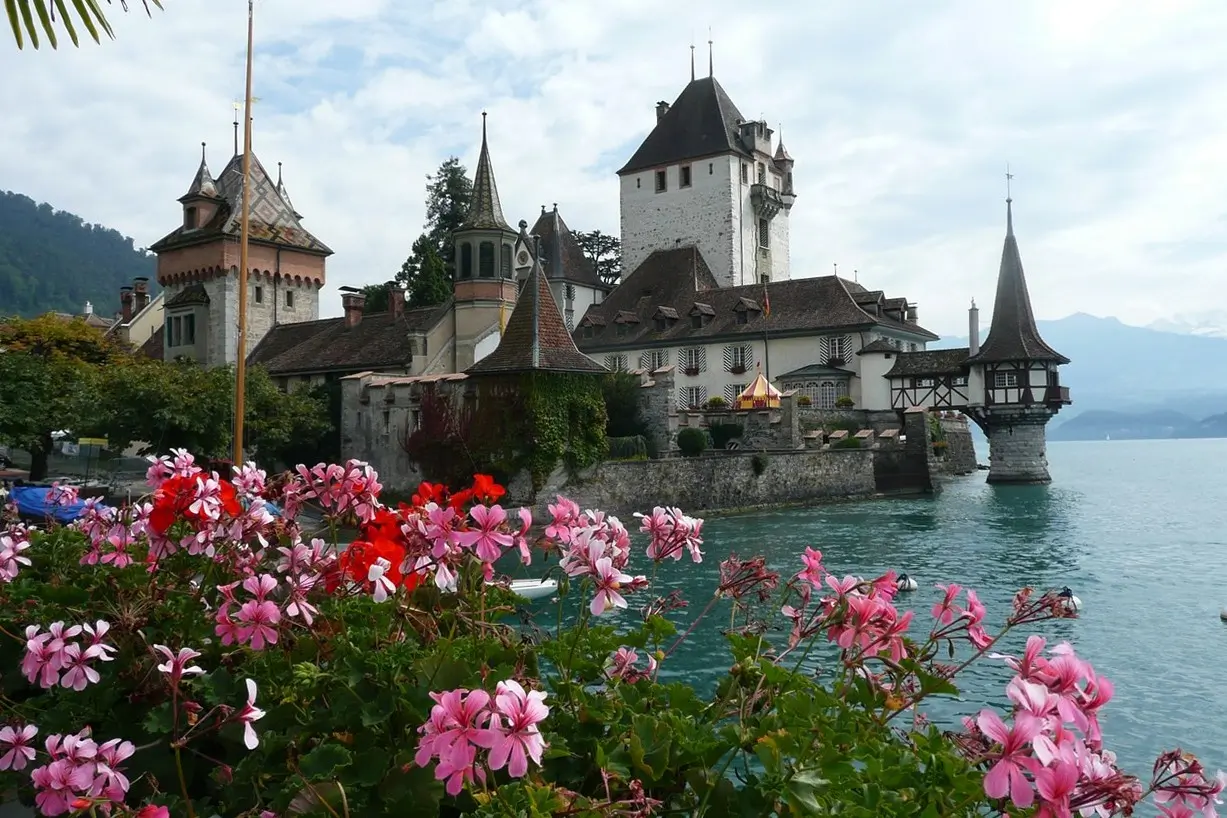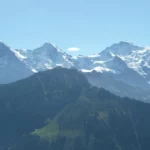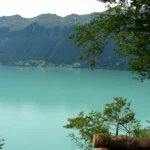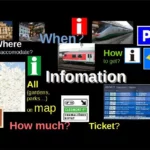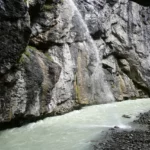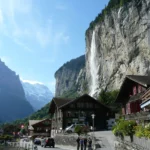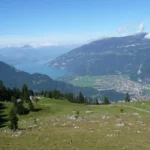Last Updated on 26/02/2023
Region Jungfrau has too much interesting. What to choose – Lake Thun or Brienz? Lake Thun is larger. The relief here is more varied, the picture is changing all the time. There are several interesting places on the lake: the Beatus caves, Spiez and Oberhofen castles, Thun and the Thun castle. Lake Brienz is rather monotonous in relief and boring, but Giessbach waterfalls are very impressive. So I would choose Lake Thun cruise, but also Brienz and Giessbach waterfalls with car or public transport.
Attractions map – here.
Grindelwald, Lauterbrunnen
Interlaken, Schynige Platte
Meiringen, Brienz Lake, Ballenberg
Bern – fontains, cathedral and clock tower
Lake Lucerne map of attractions
Orientation
Switzerland by car
Lake Thun cruise
We depart from Interlaken West. At the top you can see the red house of the Harder Kulm upper station.
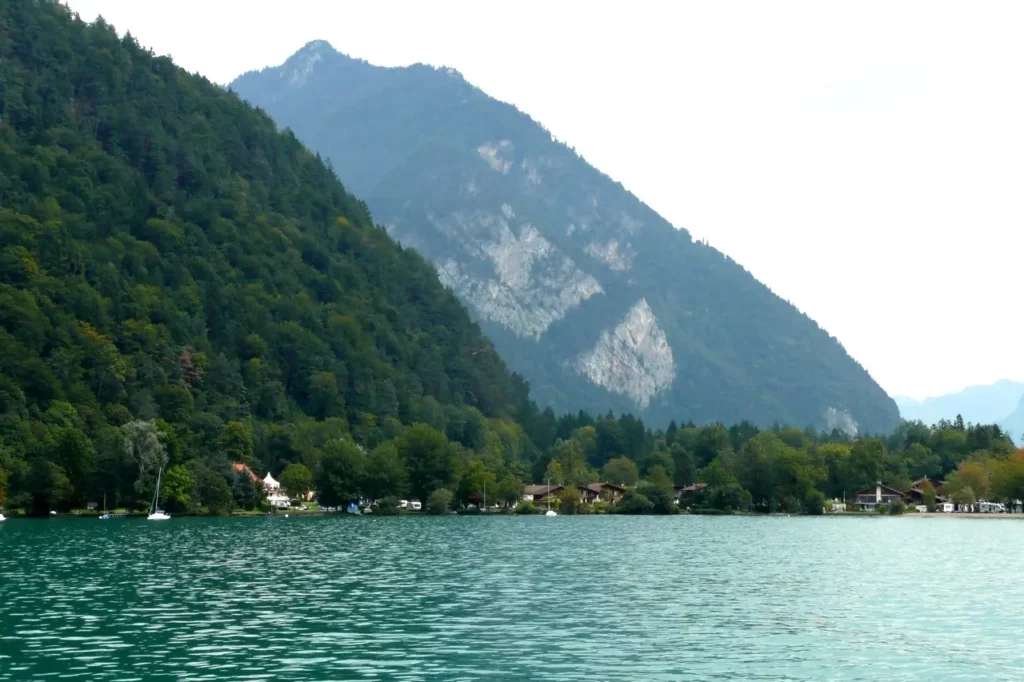
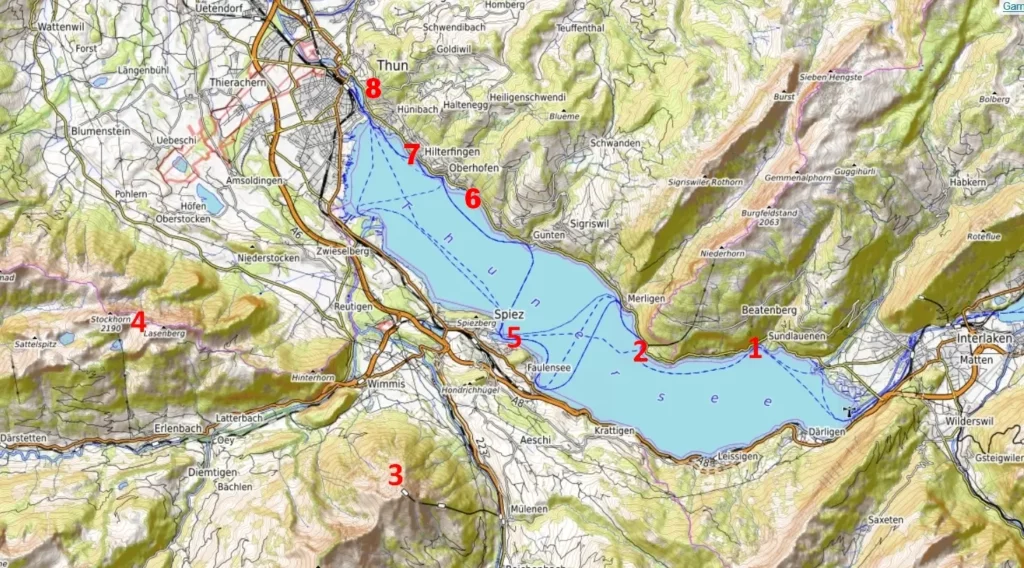
We did not visit the Beatus Caves (1, Beatushöhlen). There was no time, and the photos were not inspiring.
You can get to the caves as follows.
Take a boat to the Beatushöhlen / Sundlauenen stop, then walk for 20-30 minutes.
Or by bus 21 Interlaken – Thun (10 minutes on foot).
Few stalactites, a little water and nice waterfalls at the entrance. The falls can be seen from the lake.
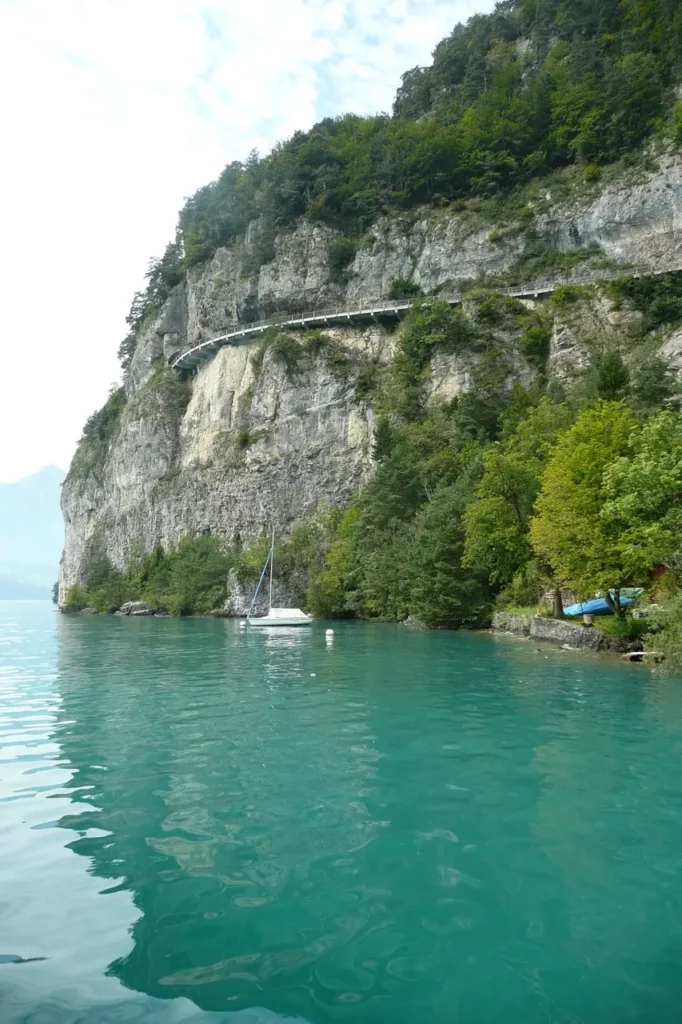
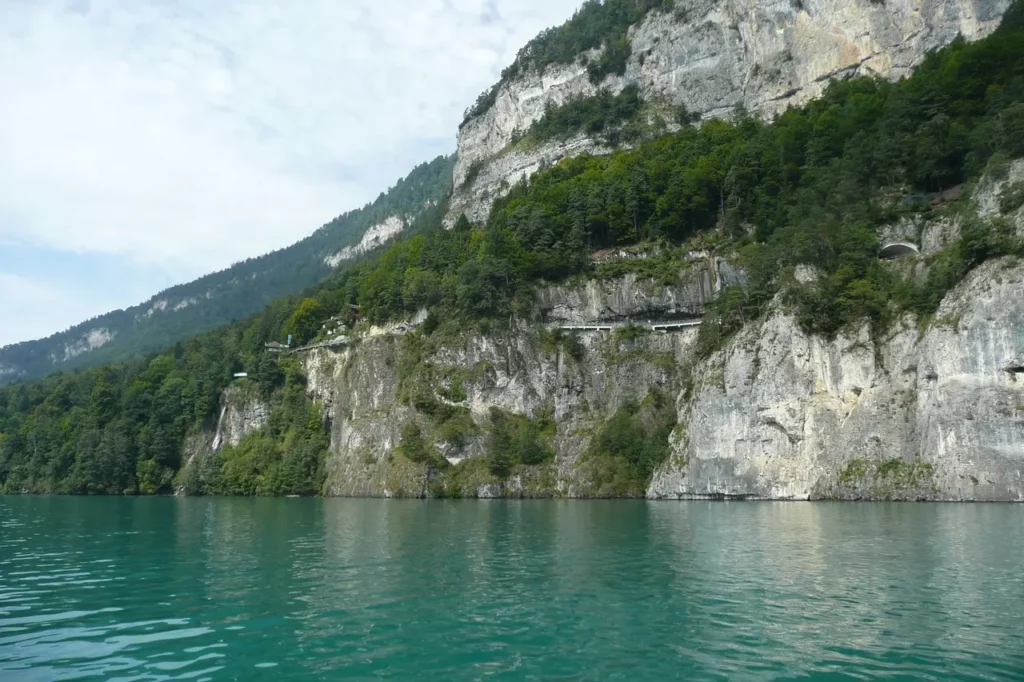
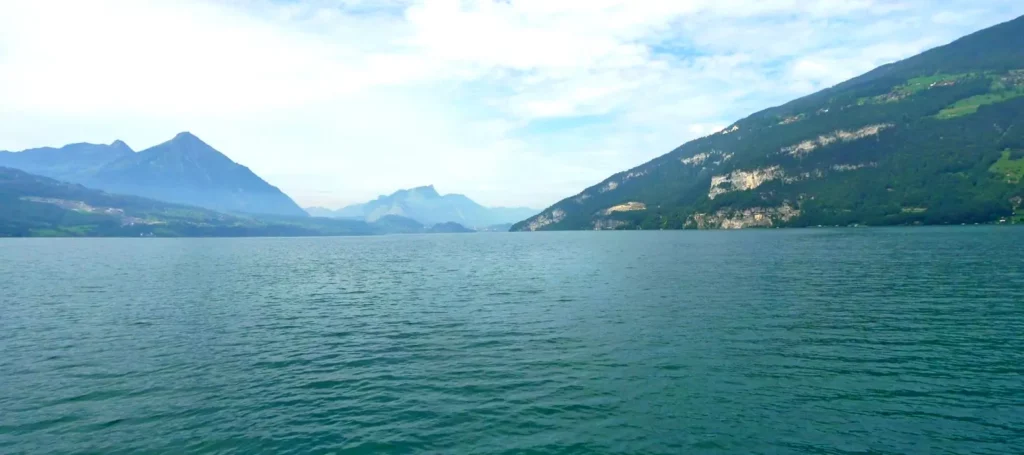
From the next stop of the boat Beatenbucht, the funicular and then the gondola lift to the top of Niederhorn (2). Entertainments – views of the mountains and Lake Thun, hiking trails, trottibike.
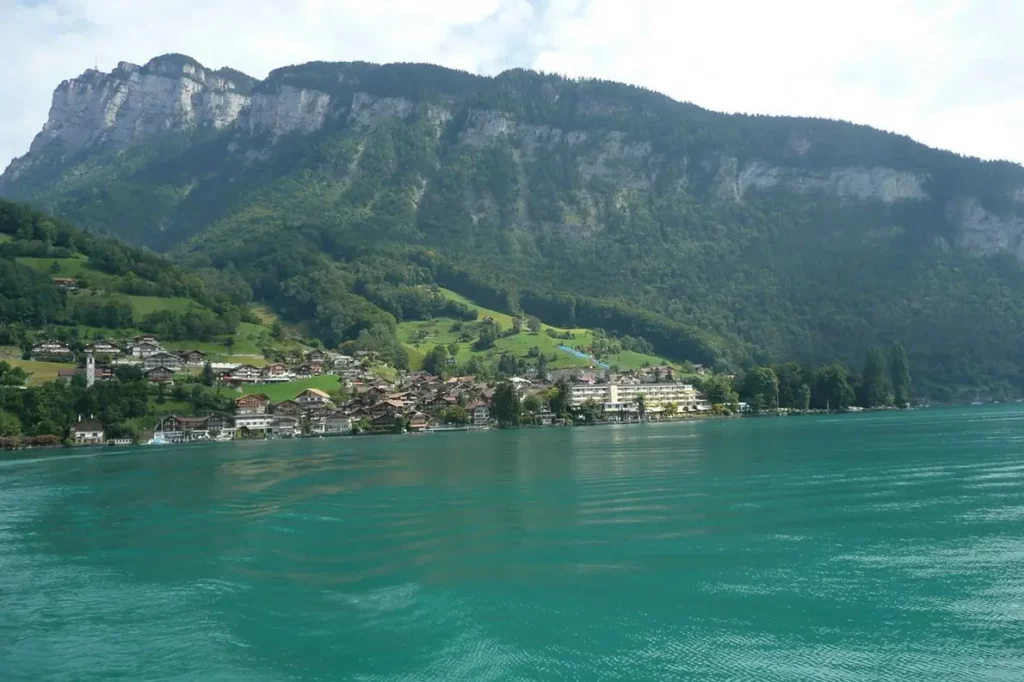
On the right you can see the finucular lane.
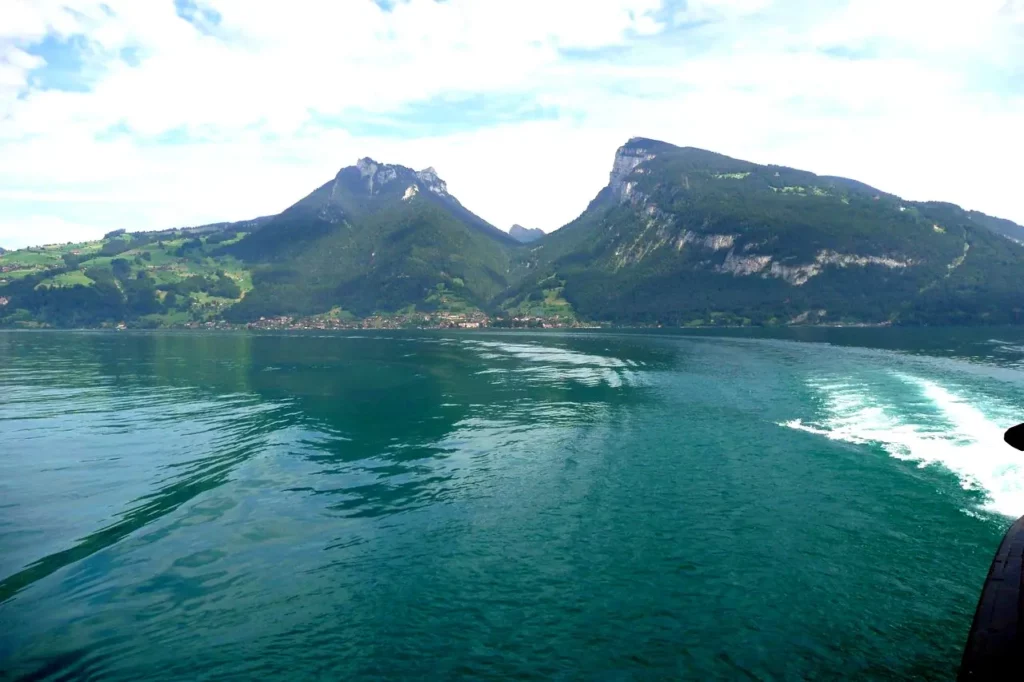
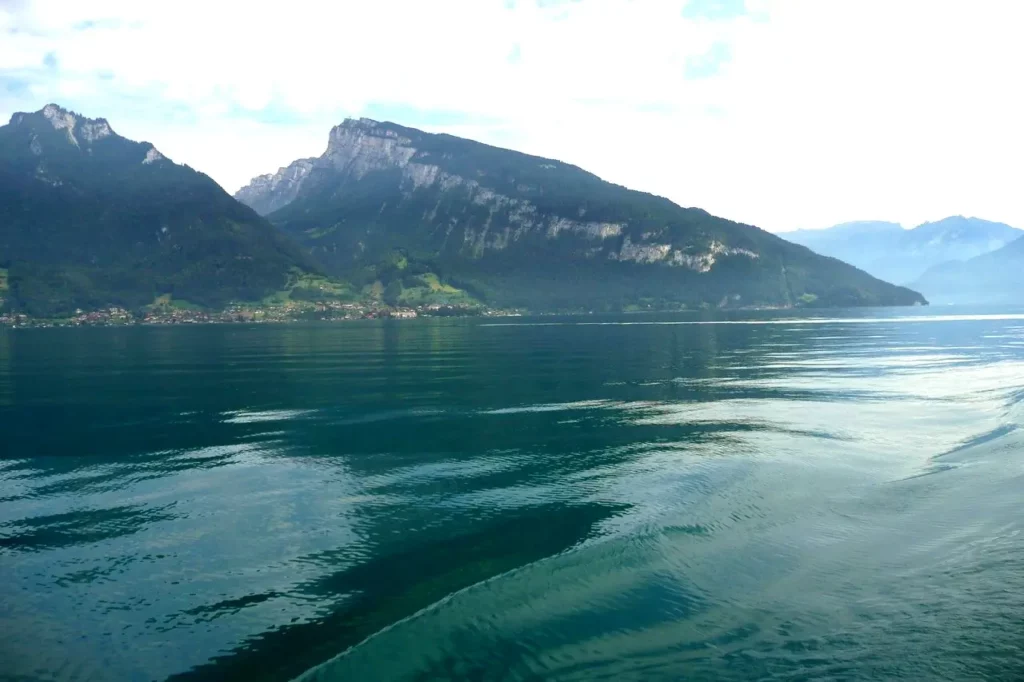
The same entertainment for those who have free time (that is, they did not come for the first time) and stayed nearby will be funicular / cable car to the mountains Niesen (3, a mountain of easily recognizable triangular shape) and Stockhorn (4) near Spiez ( 5).
In the photo from left to right: Niesen, Spiez, Stockhorn.
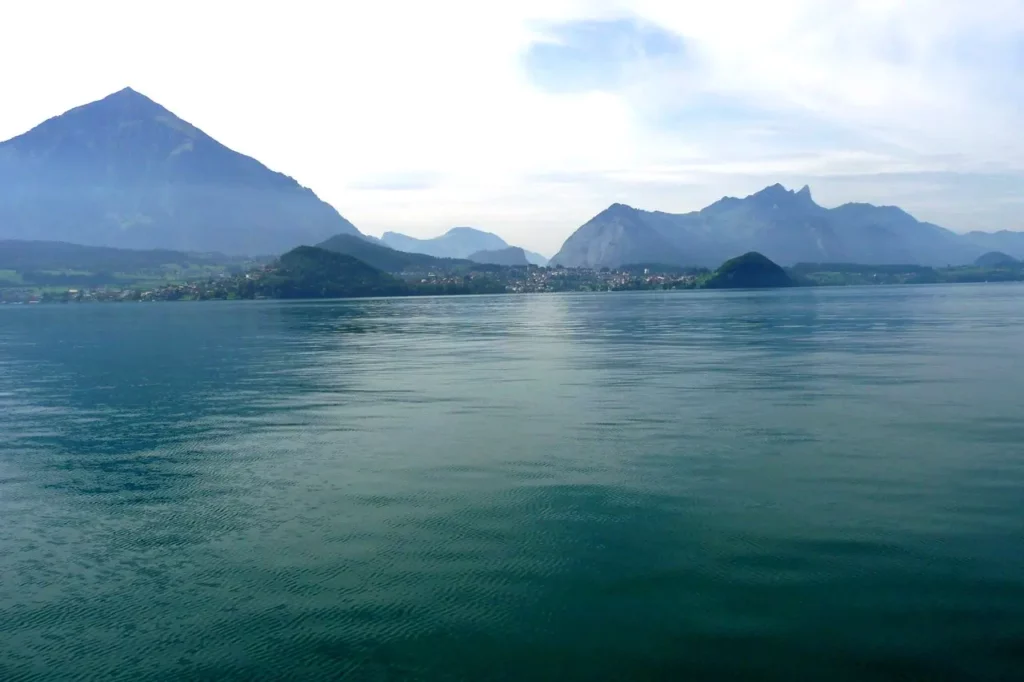
You can to get to both of them from Spiez by train. Stations Mülenen and Erlenbach, respectively.
Spiez.
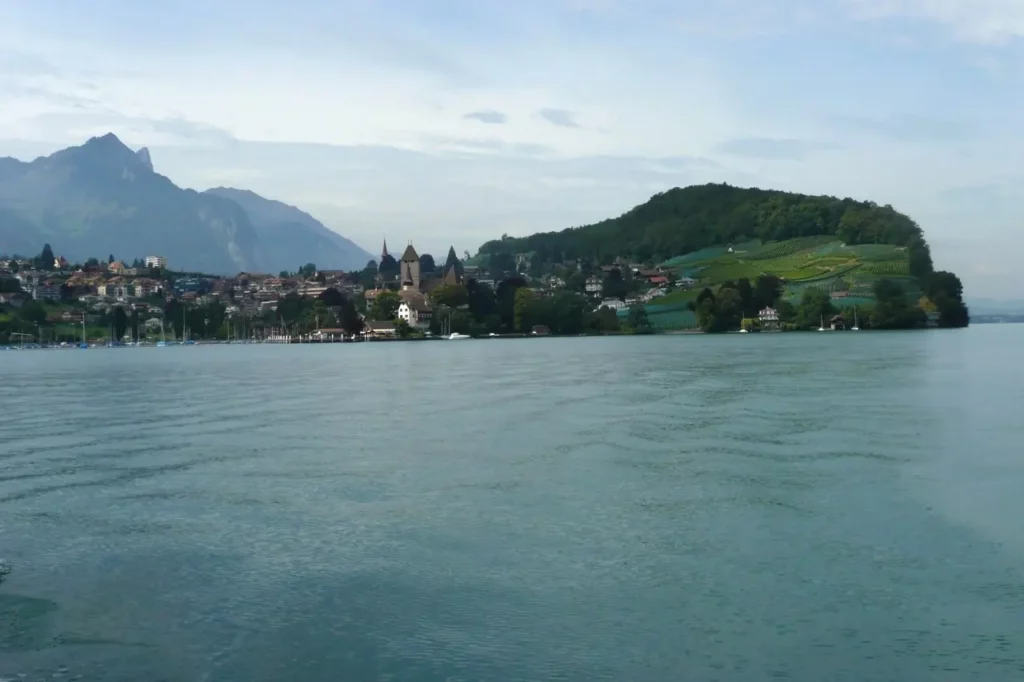
Let’s look back: the peaks of Jungfrau and her comrades are visible.
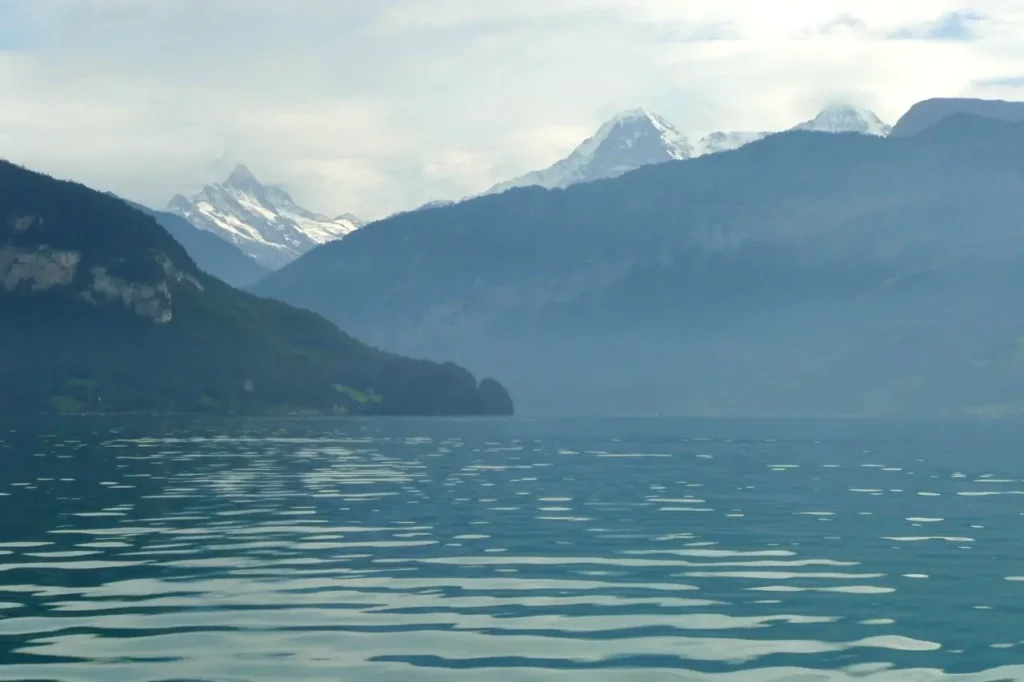
Lake Thun Castles
Do not forget to visit the local castles when taking a tour of the lake. Castles available: in Spiez, Oberhofen, Thun, Hünegg and Schadau. Of these, we were only in Oberhofen. Since on the Internet it seemed the most interesting and the time was only half a day.
The local tourist office offers two variants of museum pass, valid for 12 museums in the region. Without transport it was for 25 francs and with transport for 35 francs. Transport: one-way boat trip to Spiez-Oberhofen or Oberhofen-Spiez and 1 bus trip to Thun-Oberhofen or vice versa.
Castle Spiez
Castle Spiez (5, Schloss Spiez) was built as a medieval fortress. Several generations of wealthy families von Bubenberg and von Erlach lived in it in the 17-18 centuries. The interiors, judging by the photographs, are unpretentious; temporary exhibitions are held.
An interesting church was built in the early Romanesque style. It partially preserved the ancient frescoes of the 12th century. In addition to the boat, the Interlaken-Thun train also stops in Spiez.
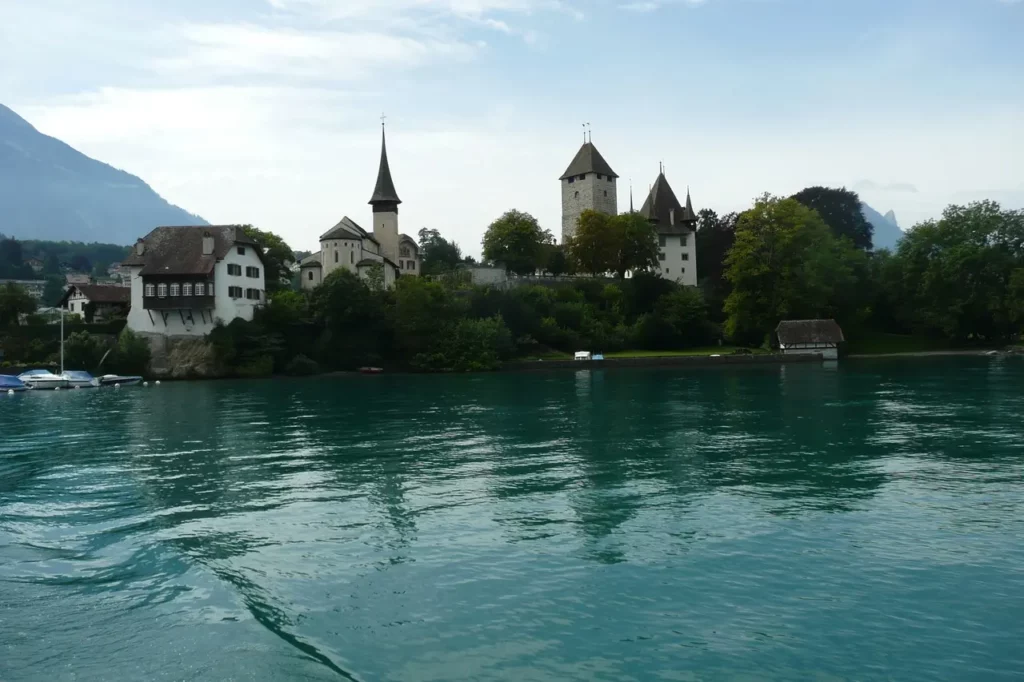
Oberhofen Castle
Oberhofen Castle (6, Schloss Oberhofen) turned out to be even better than expected. The castle is a visiting card of the lake. Its image with a turret on the water can often be seen on booklets.
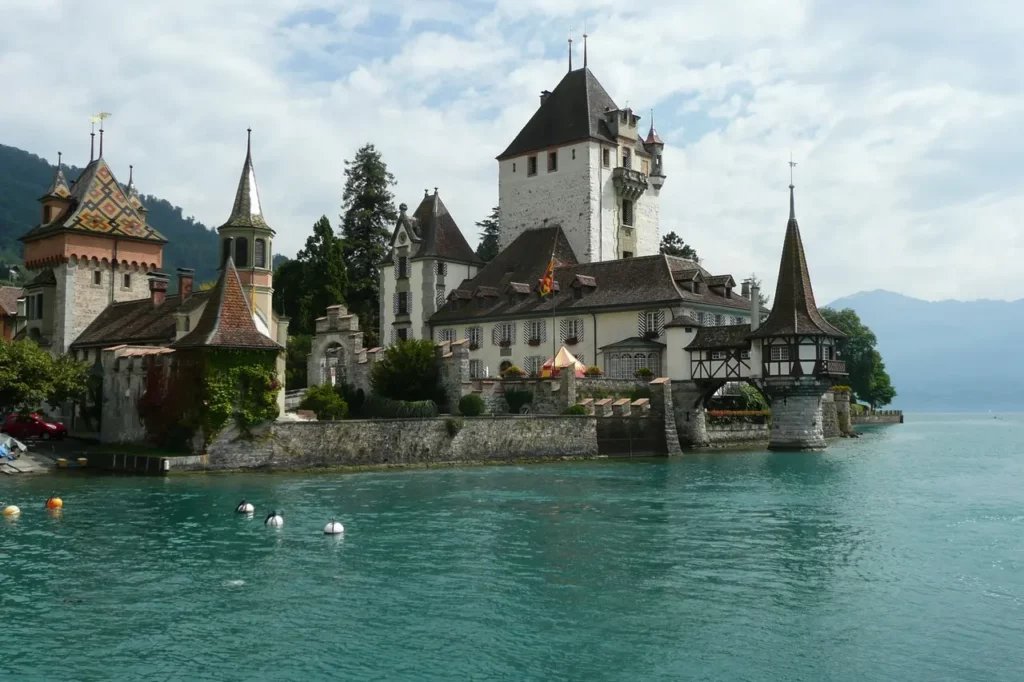
The large square donjon tower was built in the early 13th century. In the 14th century it belonged to the Habsburgs.

After the Battle of Sempach, Oberhofen passed to the Bernese troops. And until the middle of the 17th century was owned by various Bernese dynasties. From the middle of the 17th century until the end of the 18th century the castle was owned by the bailiffs. During this period they began to expand it. In 1801, it again passed into private ownership. Another reconstruction was carried out in the middle of the 19th century by Counts von Pourtales. From the middle of the 20th century the castle became a museum.

Despite numerous changes of ownership, despite the fact that the interiors in the castle are partially brought from other wealthy Bernese houses, it gives the impression of a residential building, not a museum. As if the owners only temporarily lend their homes for inspection.
Here are the interiors from the 16th to the 19th century: a room in the style of Louis 16 (brought from Bern), Napoleon 3’s salon, a Turkish room at the very top (interior of the last owners), a knight’s room of the first owners – the Bernese dynasty Scharnachtal, a room of the Grand Duchess Anna Feodorovna and etc.
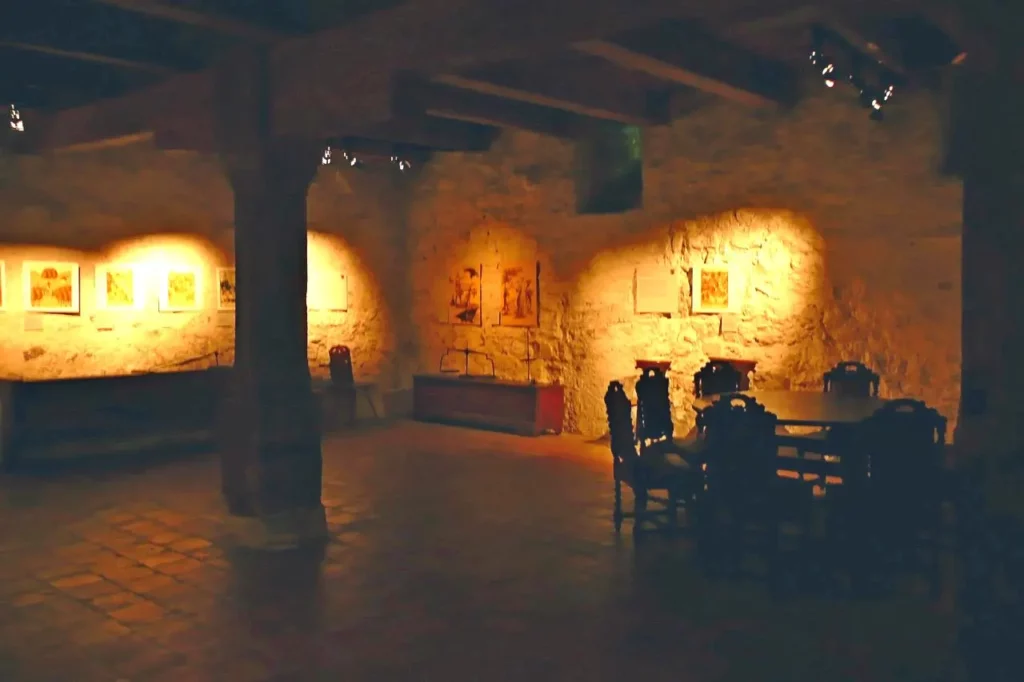
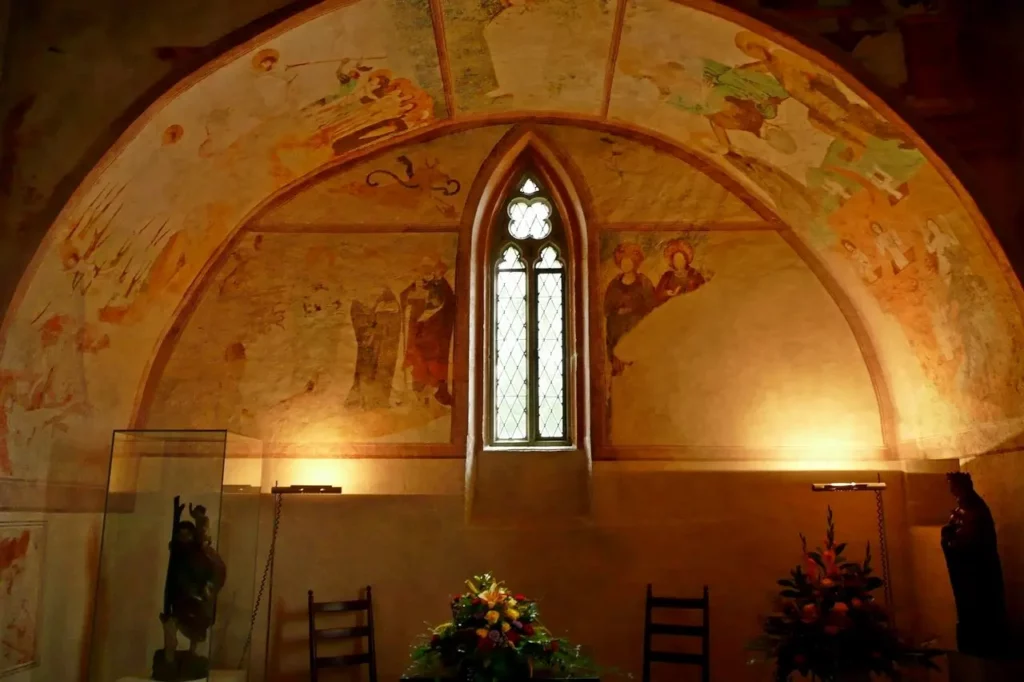
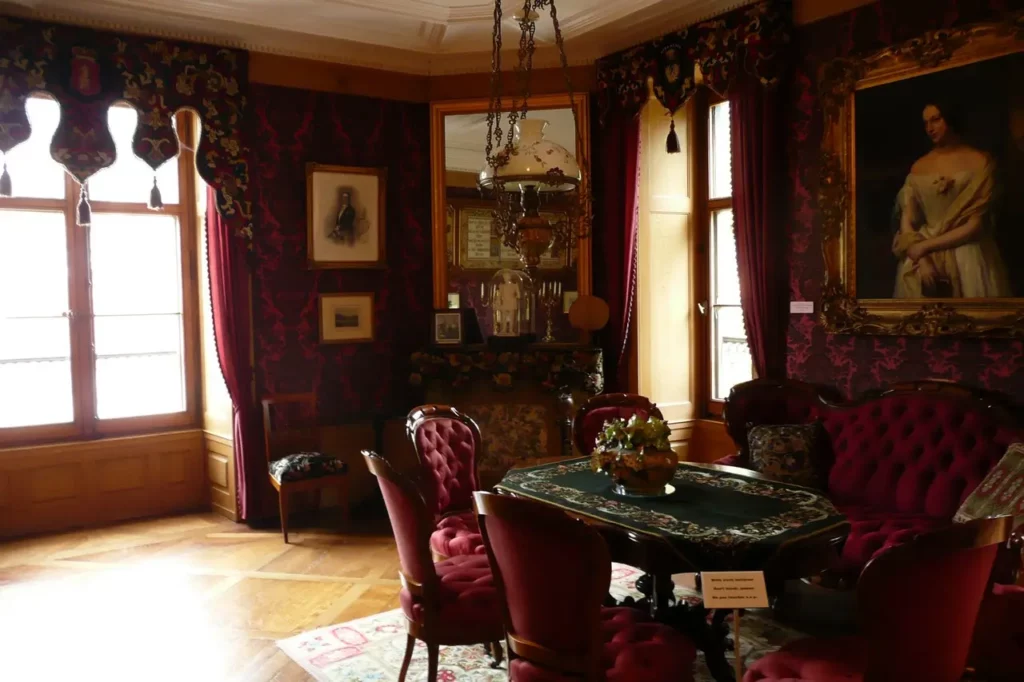
Frescoes of the 15th century have survived in the castle church; here and now people are baptized and married.
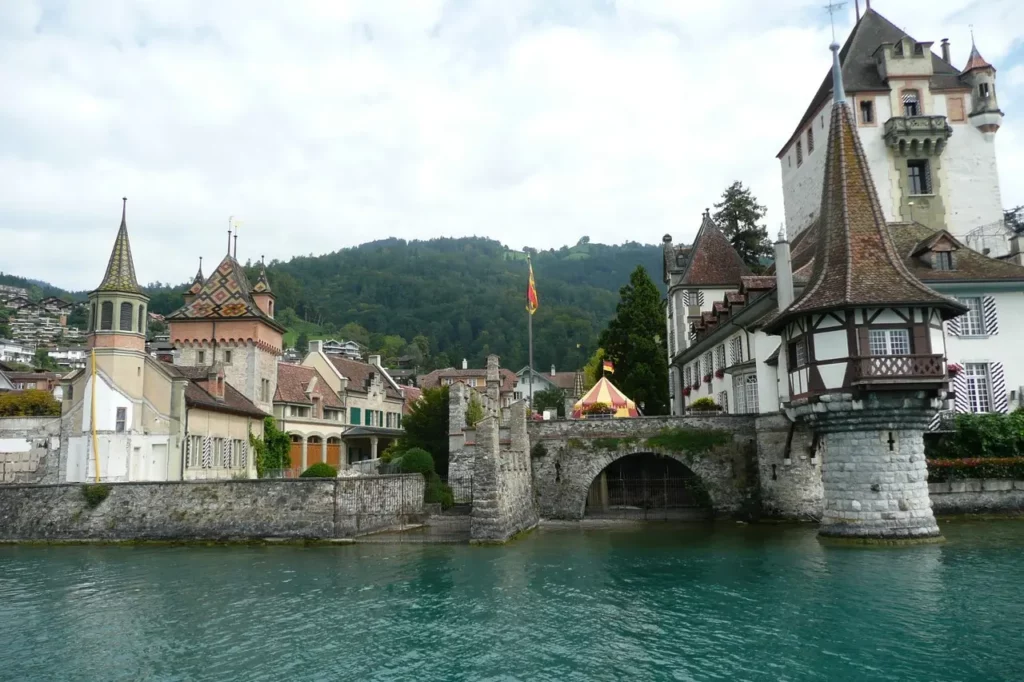
There is a small, but very nice park near the castle, laid out around 1840, with flowers, a grotto, a pergola, a small greenhouse and even American mammoth trees.
Notice, that you can get to the flower terrace near the castle following the sign to the toilet, but not from the park.
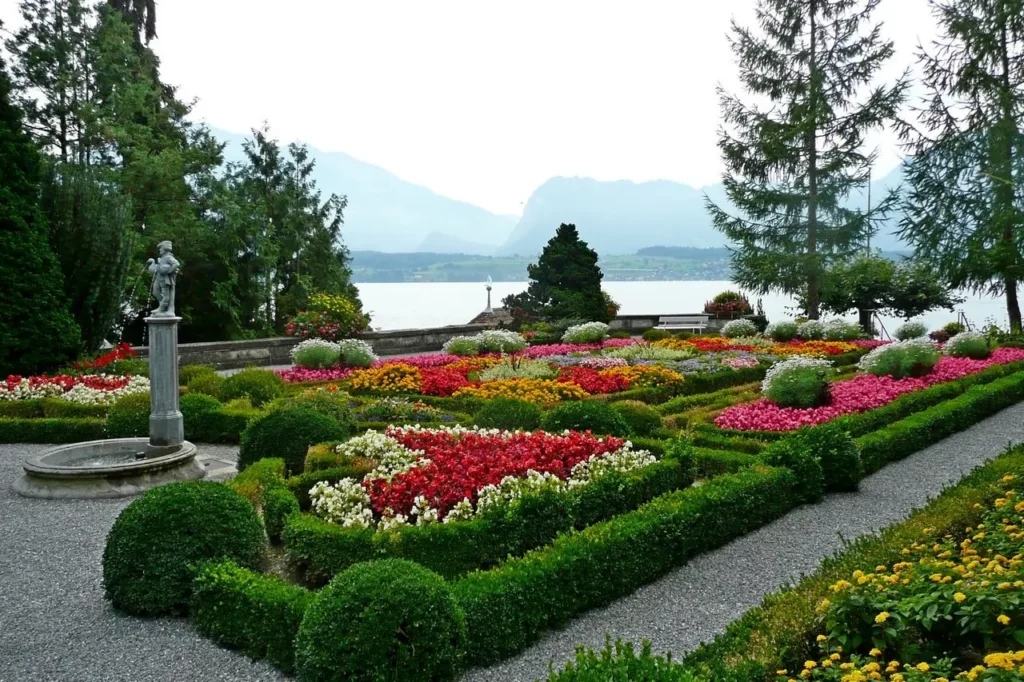
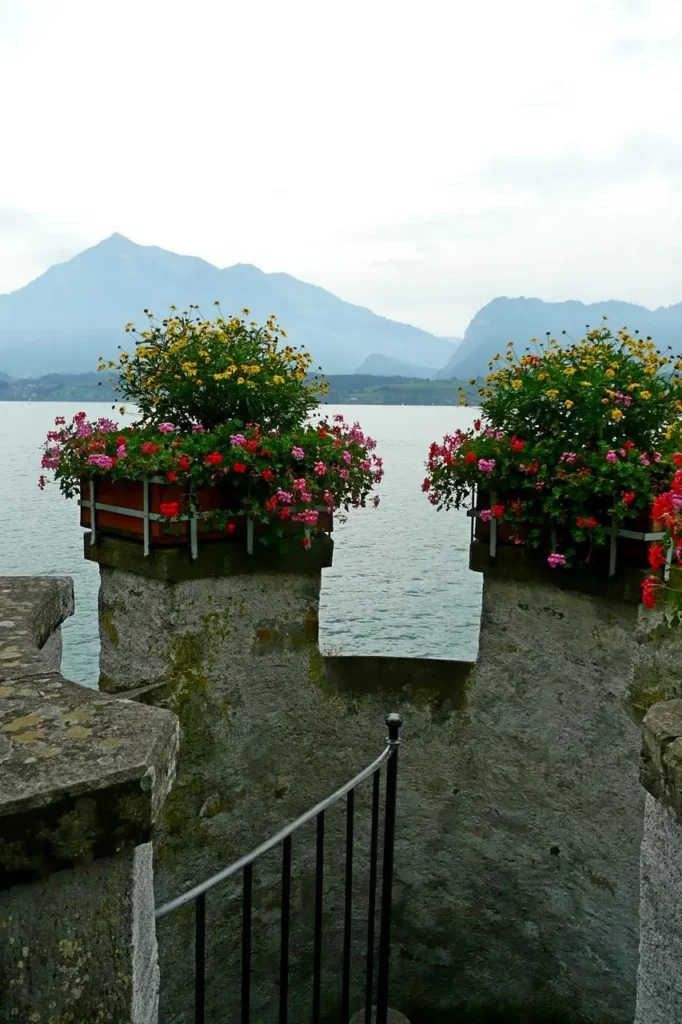
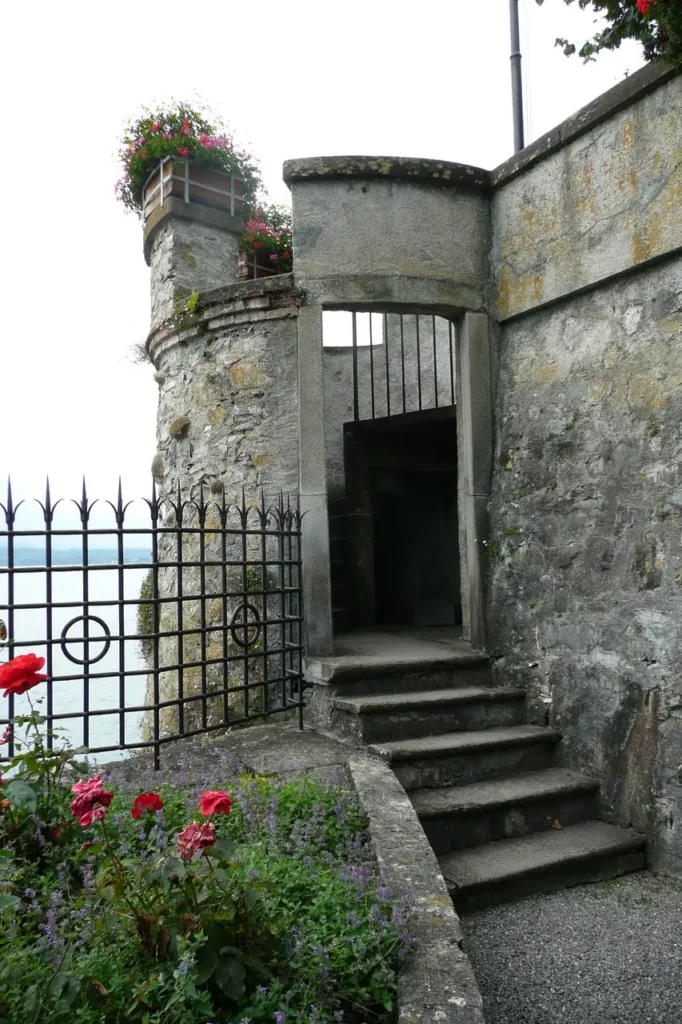

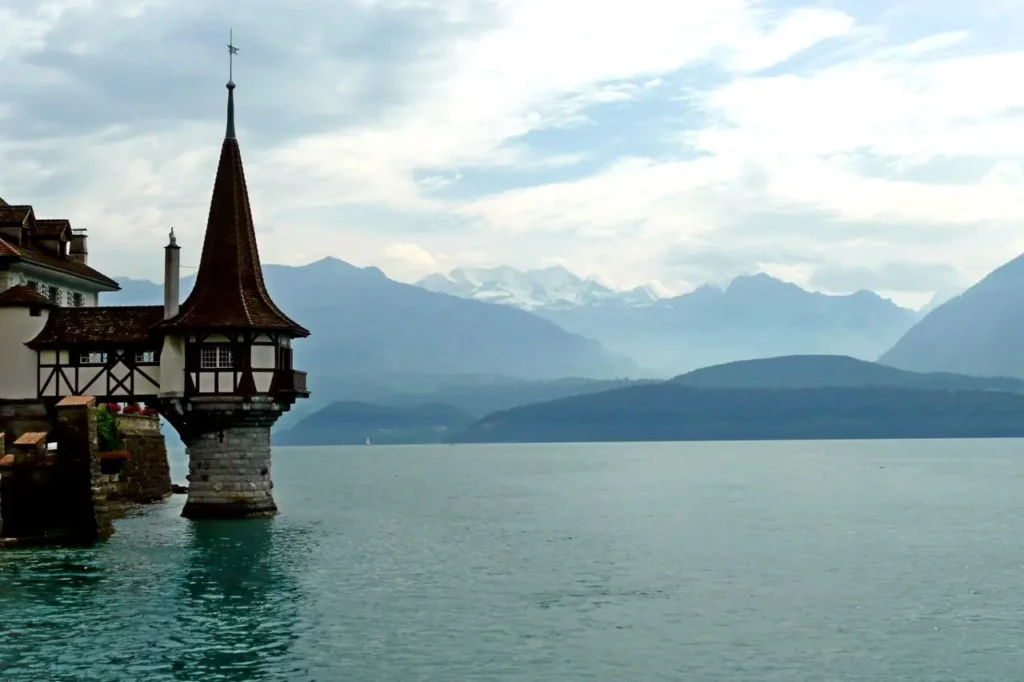
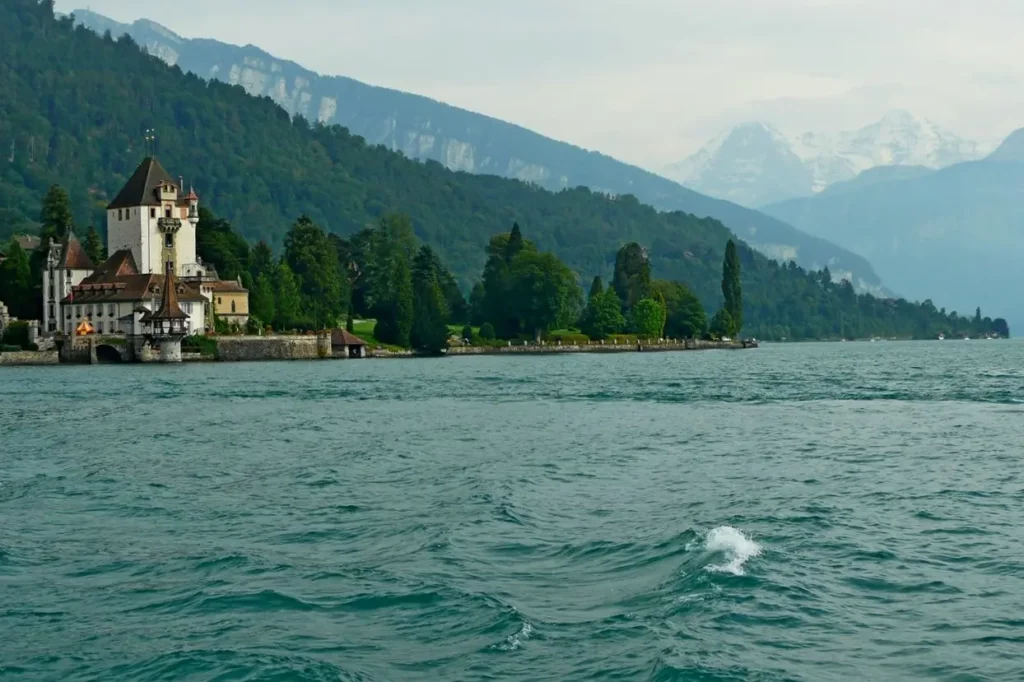
If you don’t want to wait for the boat, you can go further towards Thun by bus 21 or 25.
Castle Hünegg
Hünegg Castle (7, Schloss Hünegg) is the next stop for the boat. Here in 1861-1863 Baron von Parpart built the castle, taking as an example the Renaissance castles of the Loire. In 1900, the new owners redesigned the interiors in the Art Nouveau style (Jugendstil). Since 1900, its interiors have remained unchanged. There is a park around.
Thun
Finally our boat arrives at Thun (8, Thun).
Thun is the largest city in the region. The first mention of it dates back to the 7th century. The city’s well-being in the 15th-16th was ensured by trade, from the 17th century – the development of industry, and in the 19th century – tourist boom.
The castle of Thun (Schloss Thun) was built by the dukes of Zähringen shortly before 1200. The upper floor was completed in 1430. Now the castle houses a history museum, presenting the history of the region, as well as ceramics, local majolica, toys and a military collection from the 19th century. The pride of the museum is the well-preserved knight’s hall.
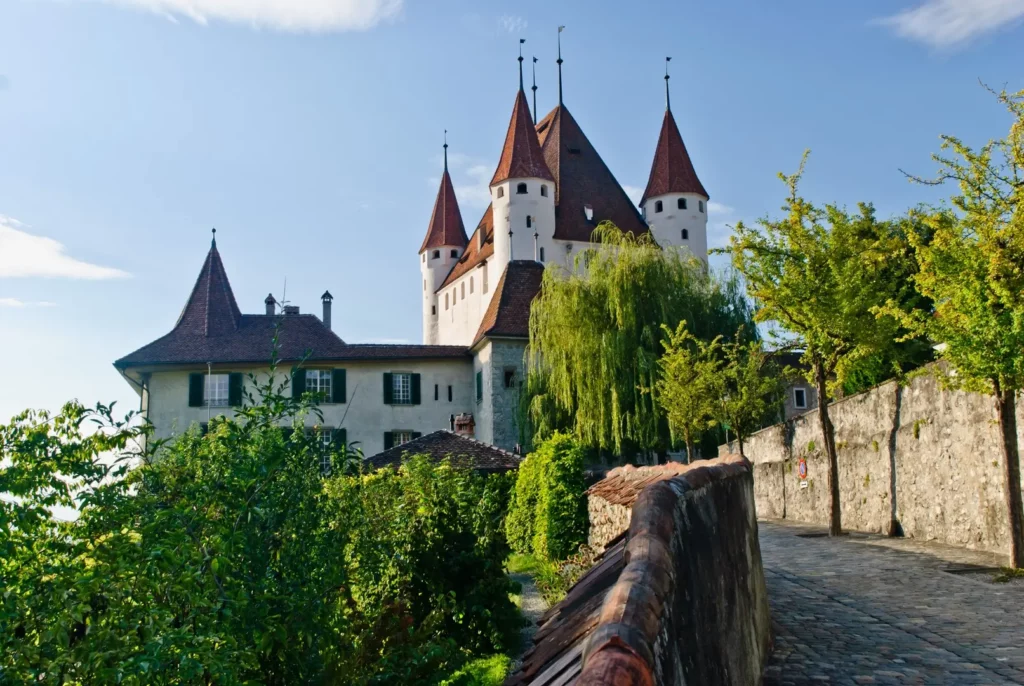

Follow me
Old town in Thun is small – it is one street with galleries, as in Bern, two old bridges, the town hall, the Thun castle. The picture is completed by a shopping street on an island in the middle of the Aare between the old town and the train station. A free map can be obtained from the tourist office at the station.
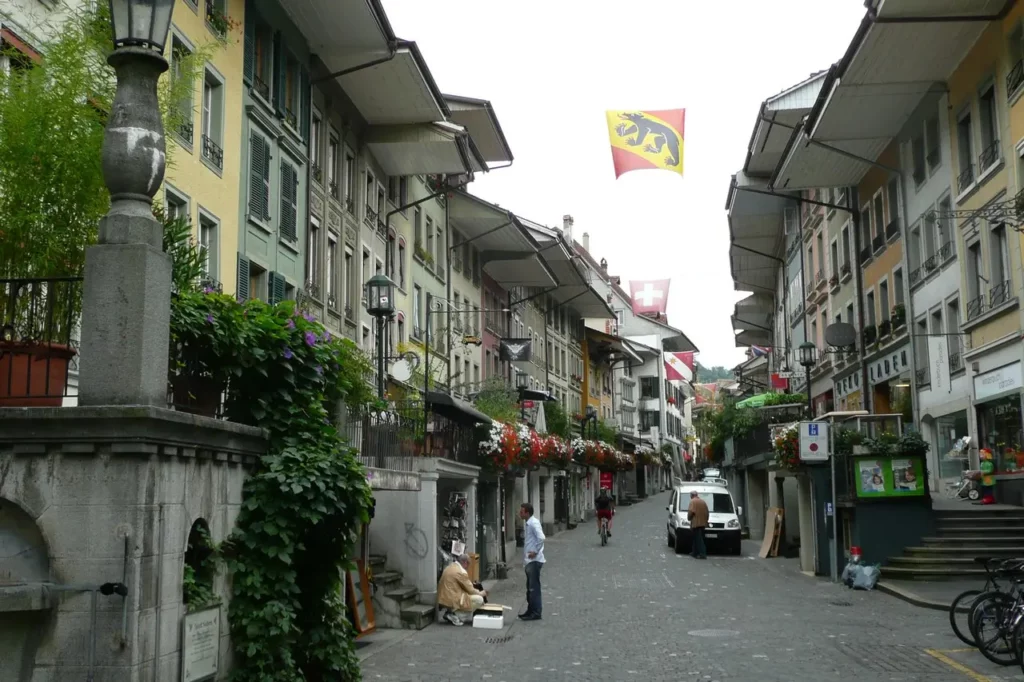
Remains of city fortifications date back to the 13th century. The town hall was built in 1500 and received its present appearance in 1685.
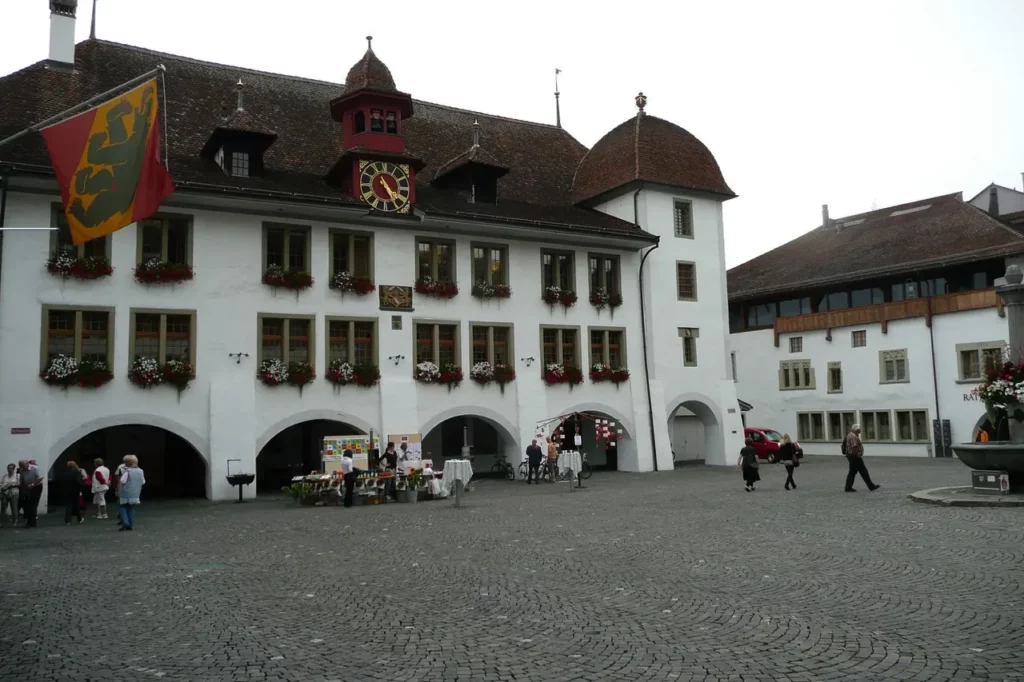

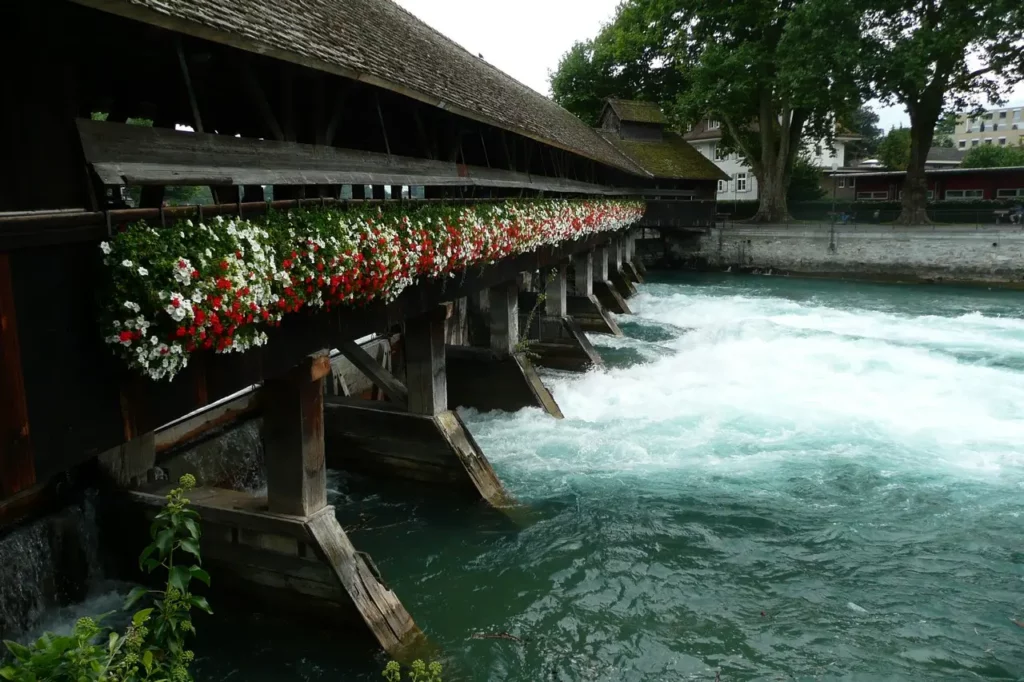
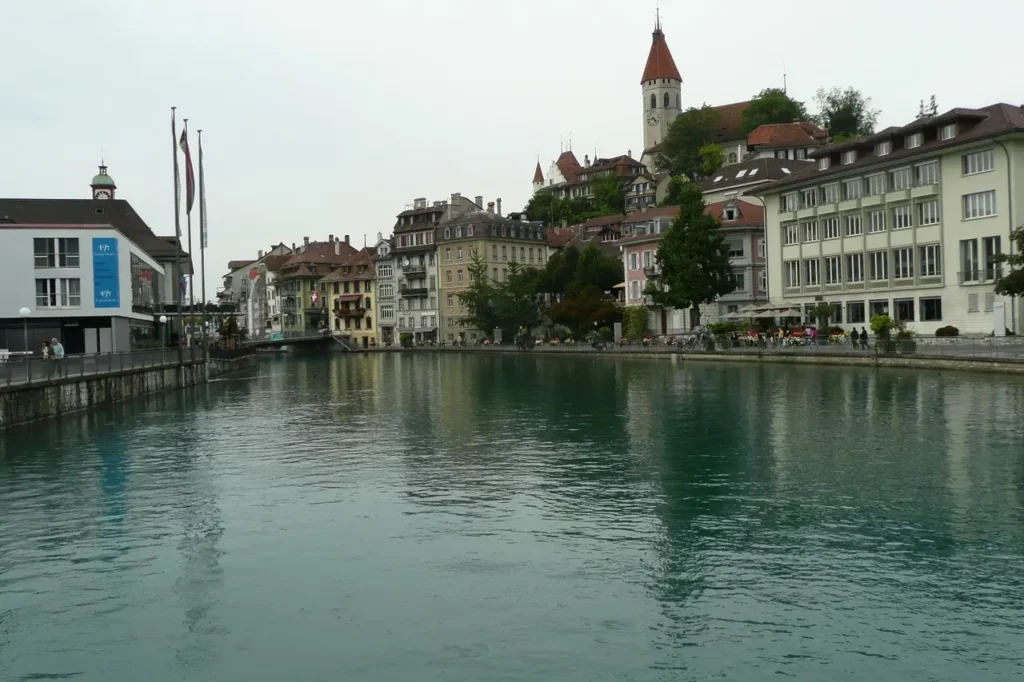
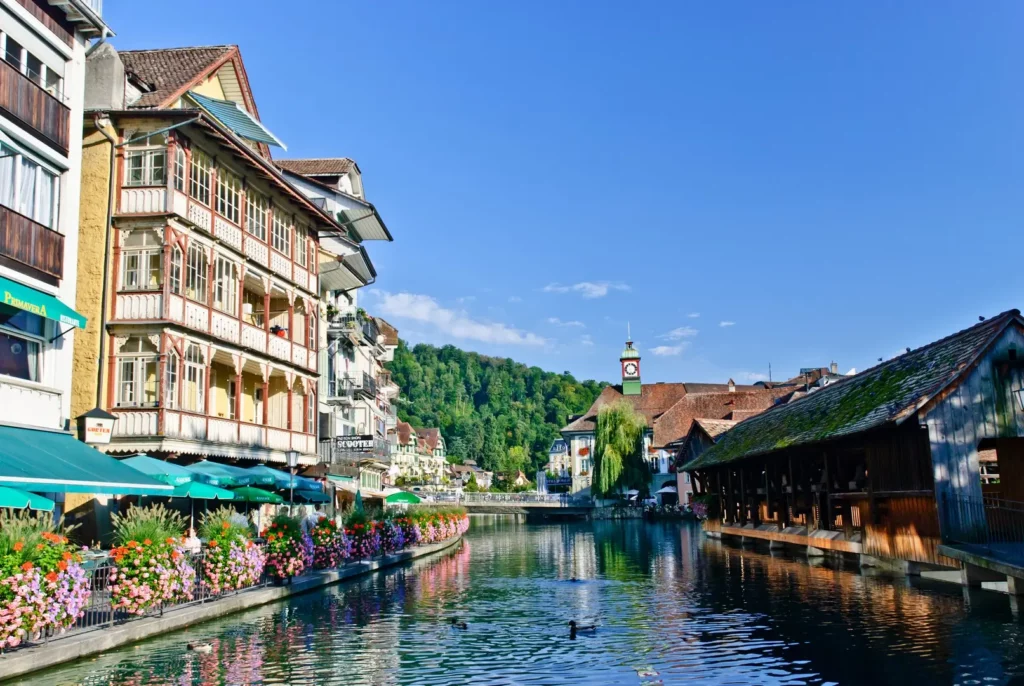
If you have some free time, you can walk to the lake and Schadau castle. Schadau Castle (Schloss Schadau) was built in the 19th century, now there is a Swiss museum of gastronomy and a restaurant. An English park is laid out around. There is also a very old Scherzligen church.

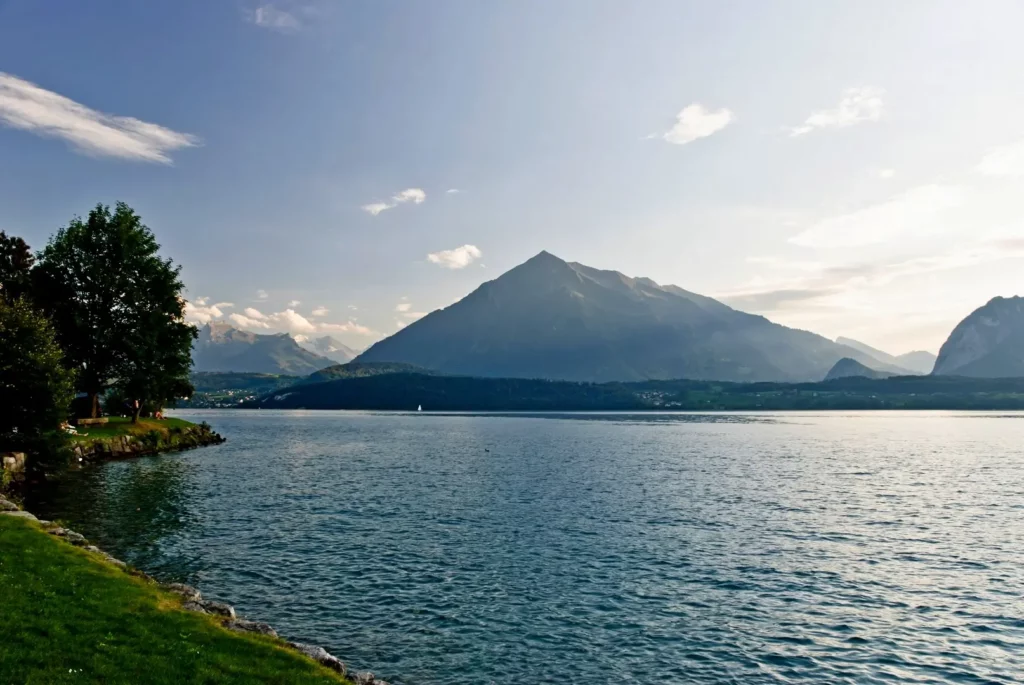
Attractions map – here.
Grindelwald, Lauterbrunnen
Interlaken, Schynige Platte
Meiringen, Brienz Lake, Ballenberg
Thun Lake
Orientation
Do you enjoy the site without cookies? This means that I work for you at my own expense.
Perhaps you would like to support my work here.
Or change your cookie settings here. I don’t use personalized ads

